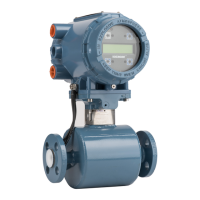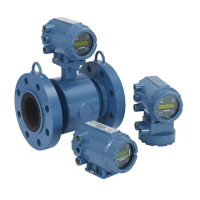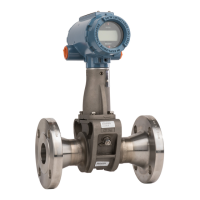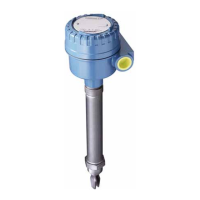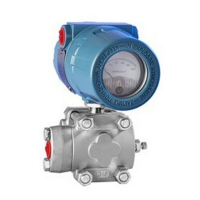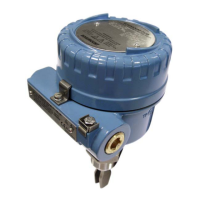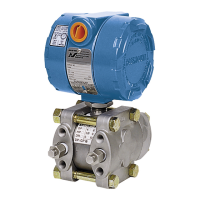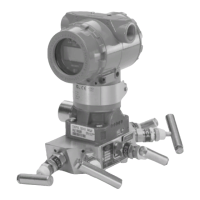5-5
Troubleshooting
Flowtube Troubleshooting
Procedures
The following tests can check Models 8705 or 8711 flowtubes in line and
full of process material. The tests allow you to determine whether or
not the flowtube needs to be removed from the process. The transmitter
must be removed to conduct these tests. Use the following procedure to
remove the transmitter:
Transmitter Removal Procedure 1. Remove power to the transmitter.
2. Remove the electronics compartment cover.
3. Carefully unhook the wires at the base of the electronics stack.
4. Remove the four bolts that attach the flowtube to the transmitter.
5. Carefully remove the housing, ensuring not to snag any wires.
6. Leave the wiring harness connected to the flowtube
terminal block.
Transmitter Assembly Procedure Use the following procedure to reassemble the transmitter:
1. Carefully attach the electronics stack to the housing.
2. Secure the four bolts that attach the flowtube to the transmitter.
3. Carefully hook up the wires at the base of the electronics stack.
4. Attach the electronics compartment cover.
5. Restore power to the transmitter.
TABLE 5-3. Magnetic Flowmeter Troubleshooting Chart.
Test A–Flowtube Coil
Step 1 Step 2 Step 3
Remove transmitter. Take all readings
across flowtube terminals.
➤
Measure the resistance across wires 1
and 2 going to the flowtube, using the
lowest ohms scale. The reading should
be between 2 and 18 V.
➤
A reading outside this range indicates
that the coils or cables are open or
shorted.
Test B– Coil Shield to Coil
Step 1 Step 2 Step 3
Remove transmitter. Take all readings
across flowtube terminals.
➤
Measure the resistance from the coil
shield (ground) to wires 1 and 2 using
the highest ohms scale. Both readings
should be overrange.
➤
Any reading on the scale indicates that
the coils are shorted to the housing.
Test C– Electrode Shield Resistance
Step 1 Step 2 Step 3
Remove transmitter. Take all readings
across flowtube terminals. Test with
process in the flowtube (either in flowing
or non-flowing condition.)
➤
Measure the resistance from wire 17 to
18 and 17 to 19. This reading will
change as you hold the leads on the
wires, so use the initial reading.
These readings should both be close to
each other.
➤
A reading less than 100 kV indicates a
possible shorted electrode. A high
reading indicates a possible coated
electrode, nonconductive process, or
electrode not in contact with the
process. A stable reading indicates a
shorted electrode.
Test D– Positive to Negative Electrode
Step 1 Step 2 Step 3
Remove transmitter. Take all readings
across flowtube terminals. Test with
process in the flowtube (either in flowing
or non-flowing condition.)
➤
Measure the resistance between wires
18 and 19. This reading should be in the
range between 100 kV and 600 kV.
➤
An overrange reading indicates a coated
electrode, nonconductive process, or
electrode not in contact with the
process.
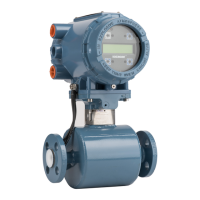
